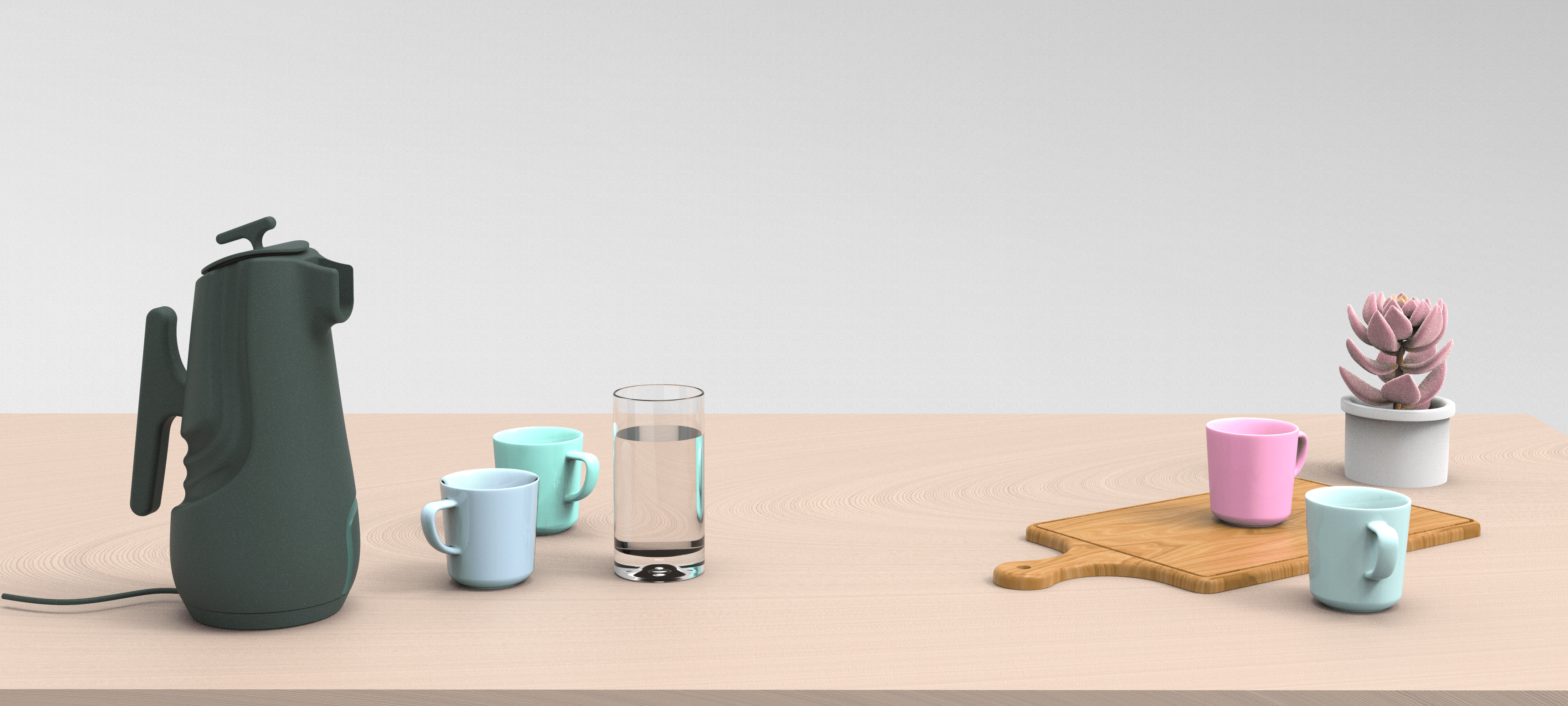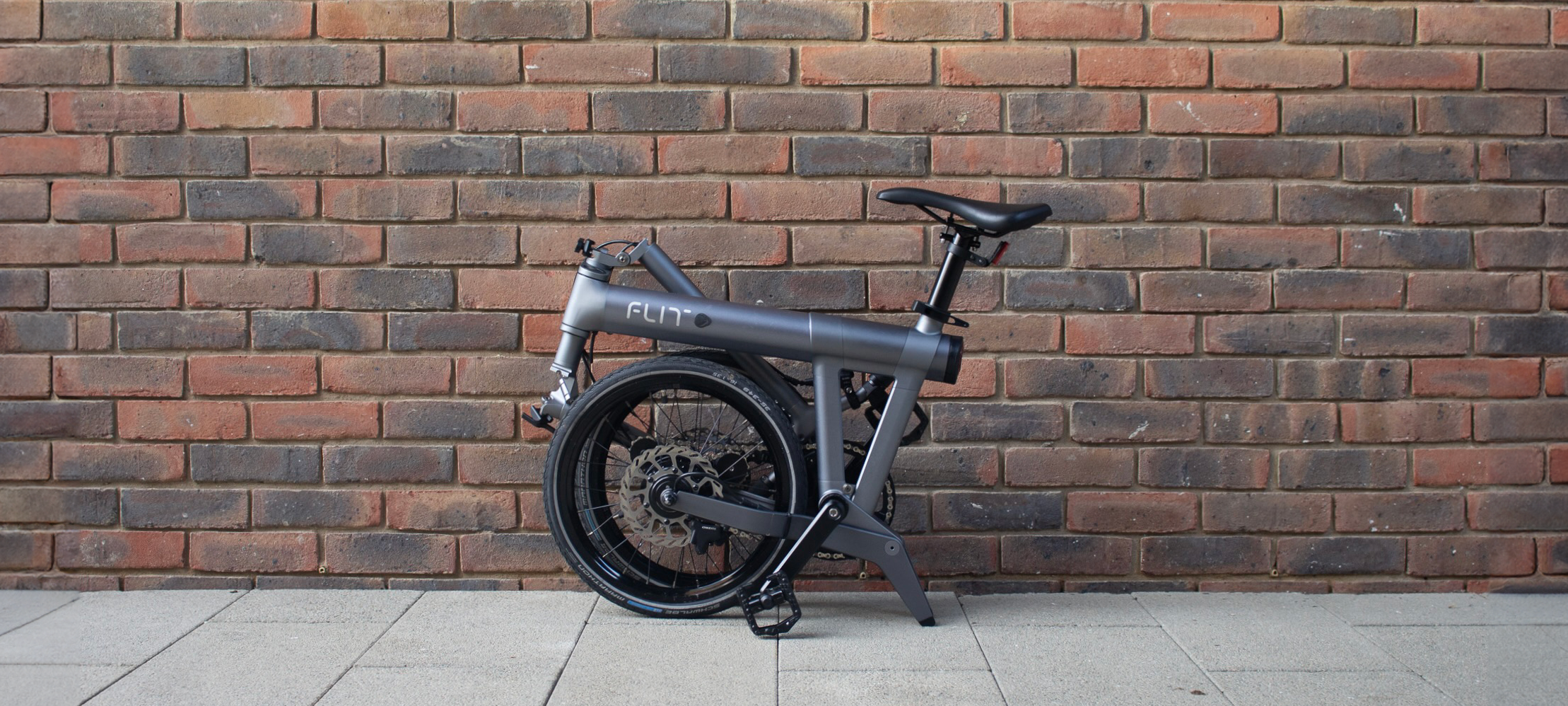Home Health AED was my masters design process completed during my final year at the University of Strathclyde.
The aim of this project is to design an AED device for use and storage in the home which is more affordable than current devices in the market, to increase device accessibility in emergency situations.
Project Length: 6 months (2020-2021)
Problem Identification
The survival rate of sudden cardiac arrest is less than 1 in 10 because the distribution of AED's required for defibrillation are not accessible for 70% of cardiac arrests which occur in home/residential areas.
This project set out with the aim to design an accessible and affordable AED for use and storage within the home, which allows the user to take more control of their heart health to prevent, detect and mitigate the risk of cardiac arrest.
The increase AED accessibility the Home Health system focuses on:
1. An AED designed specifically for use and storage in the home.
2. A product family focusing on the detection and mitigation of cardiac arrest symptoms.
3. Utilising open source technology to reduce the cost of AED devices currently (£1400+)
Concept Generation

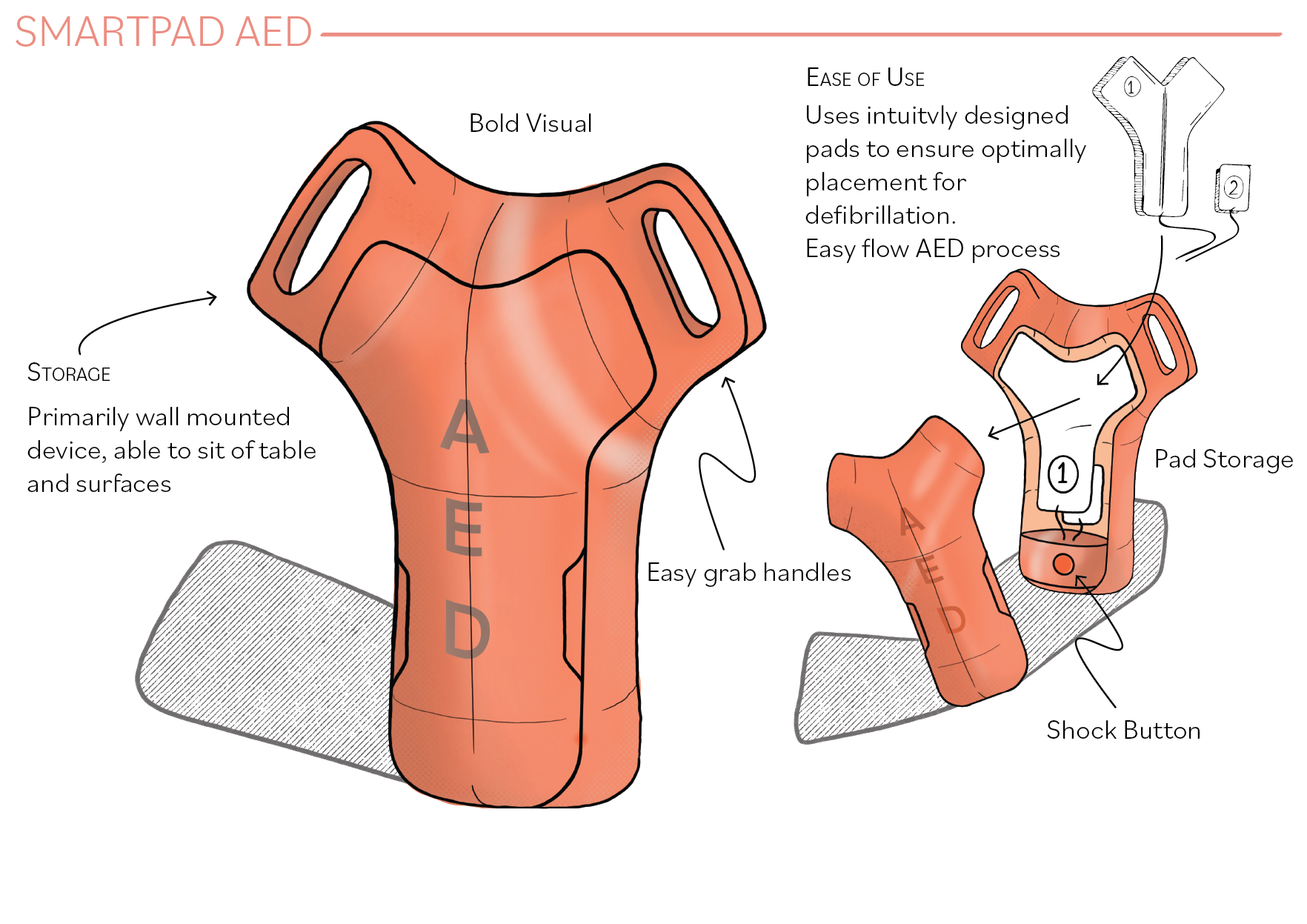
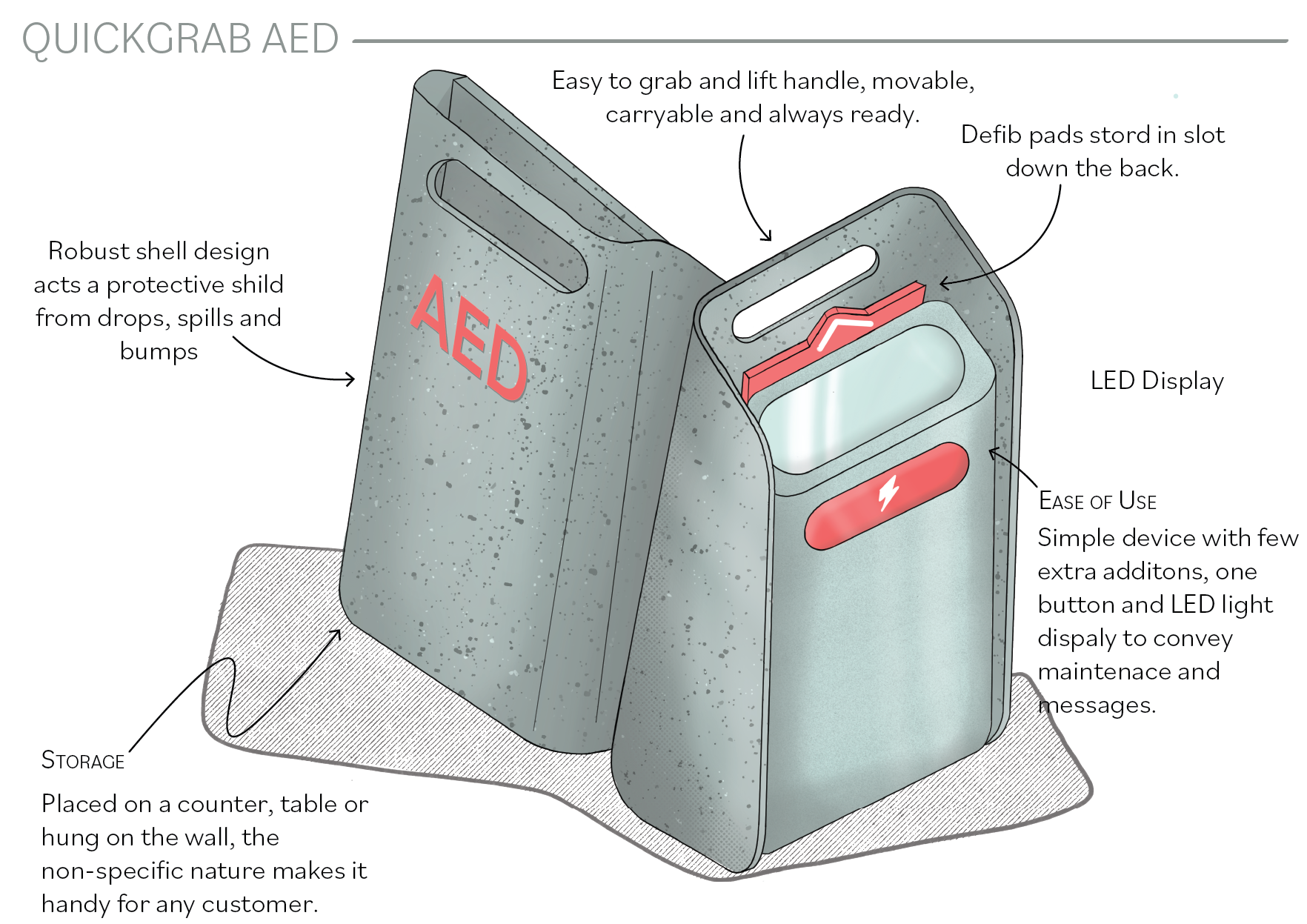
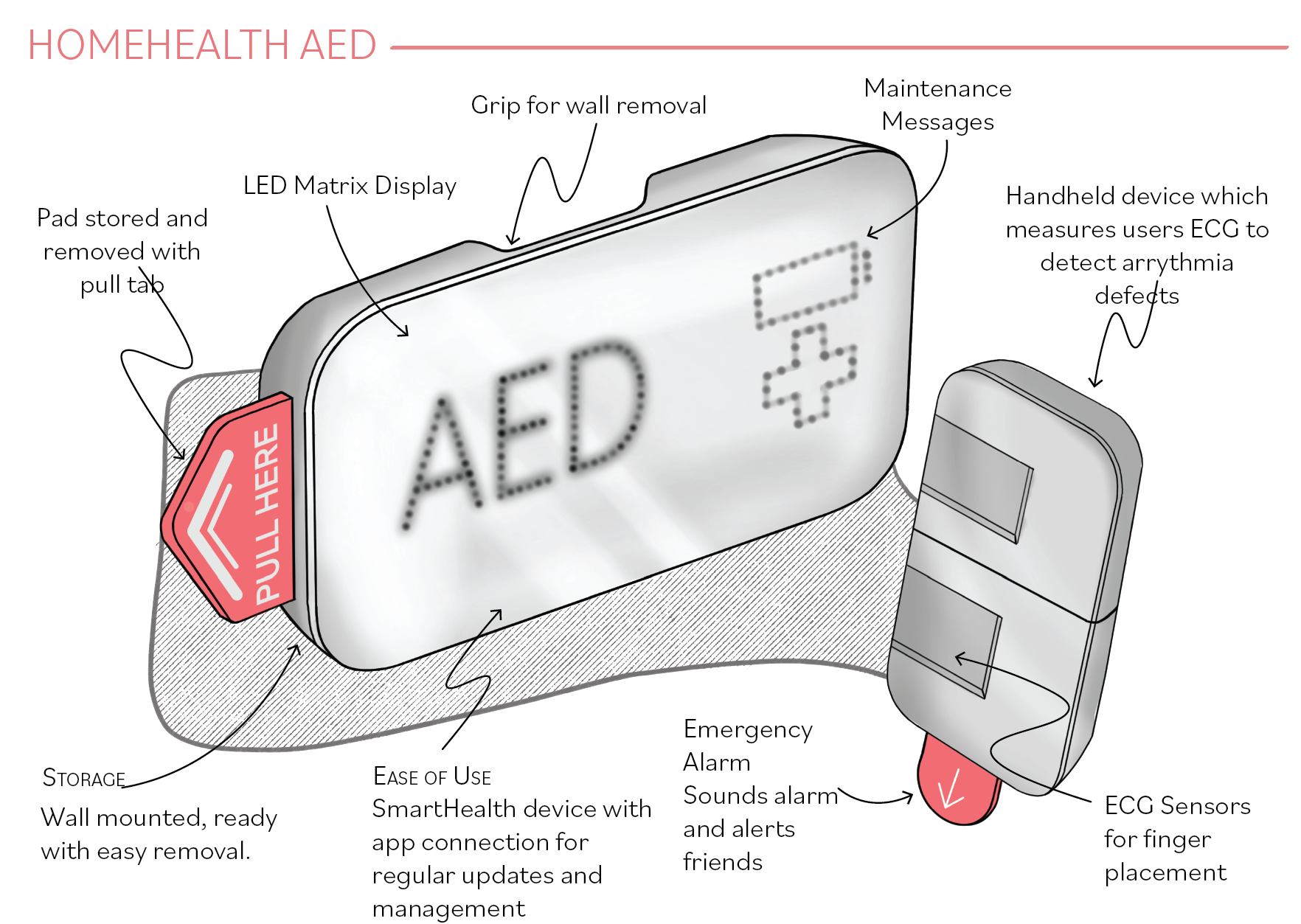
Mitigate the risk of sudden cardiac arrest with Home Health AED an afforable and easy to use defibrillator which will ensure if a cardiac arrest is to occur in your house quick and effective aid can be carried out. This quick response dramatically increases the chance of survival and decreases any long term side effects
The central AED is the core of the product, it is an AED device design for use and storage in the home which uses open source software to detect, identify and react to different types of fibrillation which occur during cardiac arrest.
Proof of Concept Circuit - Measures ECG of user and Detects Fall
